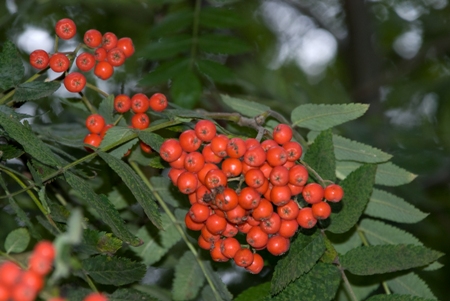
Michelle Salter writes:
Red and orange berries are creating bursts of colour around the pond and providing a feast for hungry birds. The fragrant flowers of honeysuckle have been replaced by shiny, red berries which are particularly attractive to both warblers and thrushes.

The slender branches of the many rowan trees in the woodland surrounding the pond are currently weighed down with clusters of orange-red berries, popular with blackbirds and mistle thrushes. The rowan’s green leaves will soon be changing from green to bright red and yellow as we move towards autumn.

There are still some colourful wildflowers on display; the striking spikes of Rosebay willowherb can be seen alongside the footpath by Chestnut Grove. The pretty, pink flowers of Rosebay willowherb provide nectar for honey bees and food for the larvae of the elephant hawk-moth. It seems to thrive on burnt or disturbed ground and can form large colonies by means of underground rhizomes, with just one plant forming an extensive patch.

A similar looking plant is Purple loosestrife, presently to be found growing in large clumps on the edges of the pond and around the reedbeds by the railway station. A common perennial that thrives in damp ditches and meadows, as well as by pond and lake sides, it often grows alongside the unrelated Yellow loosestrife. The tall stems of purple flowers can grow to nearly 120cm and are a nectar source for a variety of bees, butterflies and moths.
Picture credits: Michelle Salter

1 thoughts on “August Wildflower Watch – Berries, Rosebay Willowherb and Purple Loosestrife”